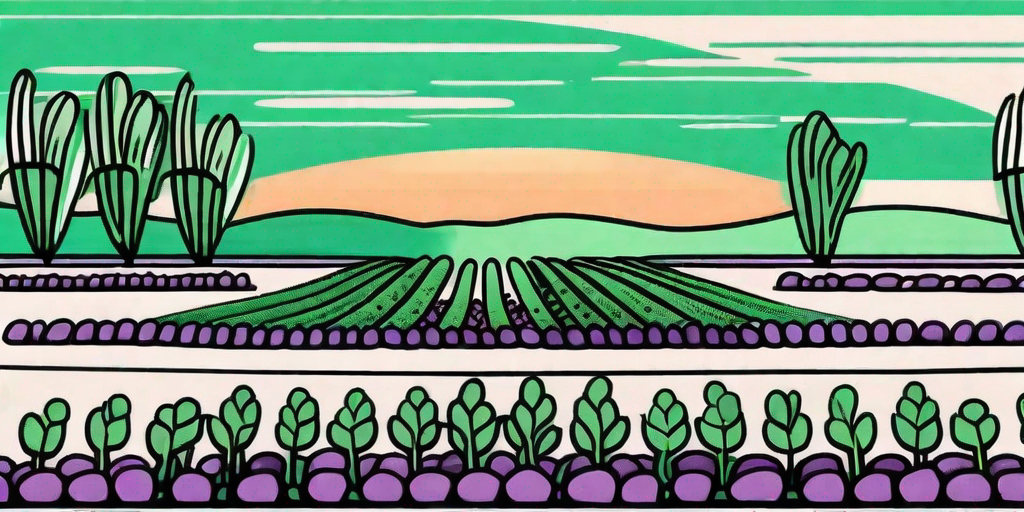
Gardening enthusiasts, green thumbs, and those who just fancy a bit of dirt under their nails, gather round! Today, we're going to delve into the world of Purple Hull Peas. These little beauties are not only a feast for the eyes with their vibrant hues, but they are also a treat for the taste buds. But when is the perfect time to plant them? Well, my friends, that's what we're here to find out.
Understanding Purple Hull Peas
What are Purple Hull Peas?
Before we get our hands dirty, let's take a moment to appreciate the star of our show: the Purple Hull Pea. This Southern gem is a type of cowpea, and despite its name, it's actually a bean, not a pea. It's known for its purple-tinged pods that house delicious, creamy peas. They're a staple in Southern cuisine, and once you've tasted them, you'll understand why.
Now, don't be fooled by their delicate appearance. These peas are as hardy as they come. They can withstand high temperatures and are resistant to drought. So, if you're someone who forgets to water their plants (you know who you are), these peas might just be your new best friend.
The History of Purple Hull Peas
Legend has it that Purple Hull Peas were brought to the Americas from Africa during the slave trade. They quickly became a staple in the Southern United States, particularly in the "Cotton Belt" where they were often planted as a cover crop to enrich the soil after the cotton harvest.
Today, the humble Purple Hull Pea is celebrated with its very own festival in Emerson, Arkansas. The annual PurpleHull Pea Festival & World Championship Rotary Tiller Race (yes, you read that right) is a testament to the pea's popularity and its place in Southern culture.
Planting Purple Hull Peas
When to Plant
Timing is everything when it comes to planting Purple Hull Peas. These peas love the heat, so you'll want to plant them in late spring or early summer when the soil temperature is at least 60°F (15°C). If you're unsure about your soil temperature, a simple soil thermometer can do the trick.
Now, if you're a bit of a risk-taker and want to push the boundaries, you can try planting them a bit earlier. But be warned, these peas are not fans of frost. So, if Jack Frost is still nipping at your nose, it's best to hold off on planting.
How to Plant
Planting Purple Hull Peas is a cinch. Start by choosing a sunny spot in your garden. These peas love to bask in the sun, so the more sunlight, the better. Next, prepare your soil. These peas aren't too picky, but they do prefer well-drained soil.
Once your soil is ready, it's time to sow your seeds. Plant them about 1 inch deep and 3 inches apart. If you're planting multiple rows, make sure to leave about 3 feet between each row. This gives your peas plenty of room to grow and makes it easier for you to walk between the rows.
Caring for Your Purple Hull Peas
Watering and Fertilizing
When it comes to watering, less is more with Purple Hull Peas. These peas are drought-resistant, so they don't need a lot of water. However, during dry periods, you'll want to give them a good soak.
As for fertilizing, these peas are pretty self-sufficient. They can fix their own nitrogen, which means they don't need a lot of extra nutrients. However, if your soil is poor, you can add some compost or a low-nitrogen fertilizer to give them a boost.
Pest and Disease Control
While Purple Hull Peas are generally hardy, they can sometimes fall prey to pests and diseases. Common pests include aphids and cowpea curculios. If you notice these critters on your plants, you can use an organic pesticide to get rid of them.
As for diseases, these peas can sometimes suffer from root rot or wilt. To prevent these diseases, make sure your soil is well-drained and avoid overwatering.
Harvesting and Storing Purple Hull Peas
When and How to Harvest
Harvesting Purple Hull Peas is a bit like playing hide and seek. The peas are ready to harvest when the pods are full and the peas inside are visible. However, the pods can be a bit sneaky and hide among the leaves. So, you'll need to do a bit of hunting to find them all.
Once you've found your peas, simply pick the pods from the plant. Be gentle though. You don't want to damage the plant and prevent future pods from growing.
Storing Your Peas
Once you've harvested your peas, you can store them in the refrigerator for about a week. If you want to keep them longer, you can blanch and freeze them. Just make sure to shell them first. Trust me, shelling frozen peas is not a fun task.
FAQs
- Can I grow Purple Hull Peas in containers?
Yes, you can! Just make sure your container is deep enough for the roots and has good drainage.
- Can I grow Purple Hull Peas in the shade?
While these peas can tolerate some shade, they prefer full sun. So, try to find a spot in your garden that gets plenty of sunlight.
- Can I eat the pods of Purple Hull Peas?
While the pods are edible when young, they tend to become tough as they mature. So, it's best to shell the peas and eat those instead.
So there you have it, folks! Everything you need to know about planting Purple Hull Peas. Now, go forth and plant! Your taste buds will thank you.











